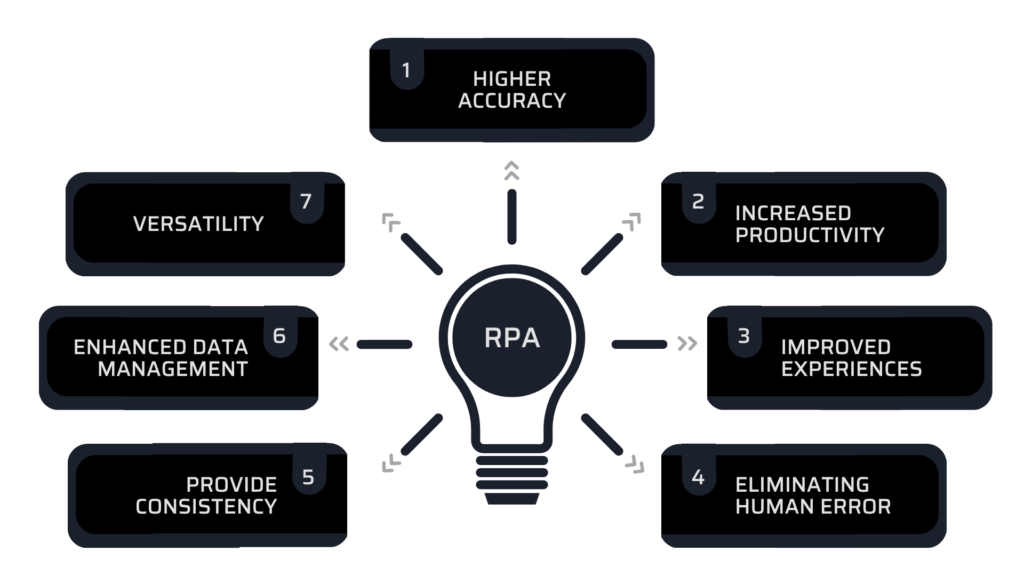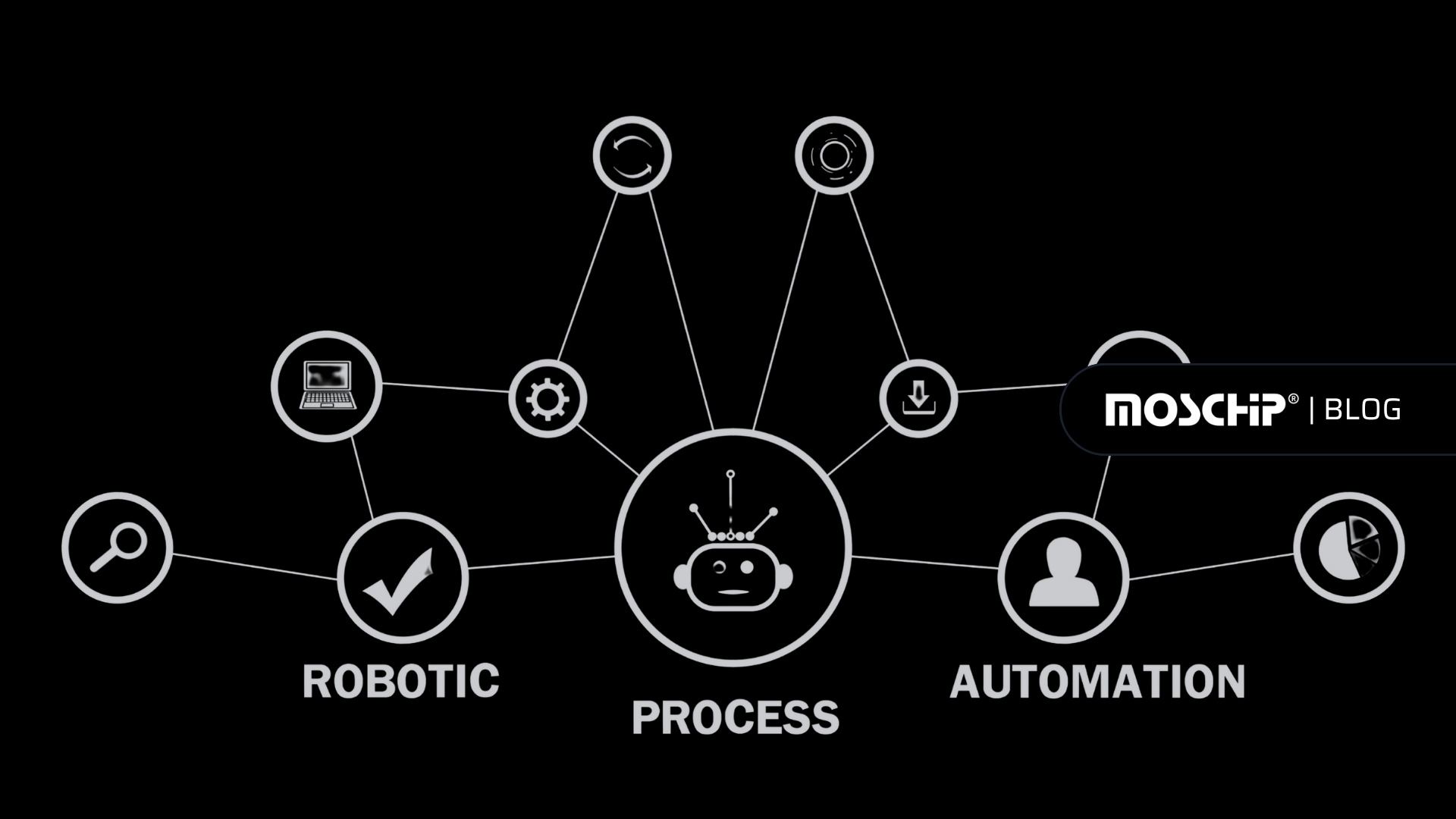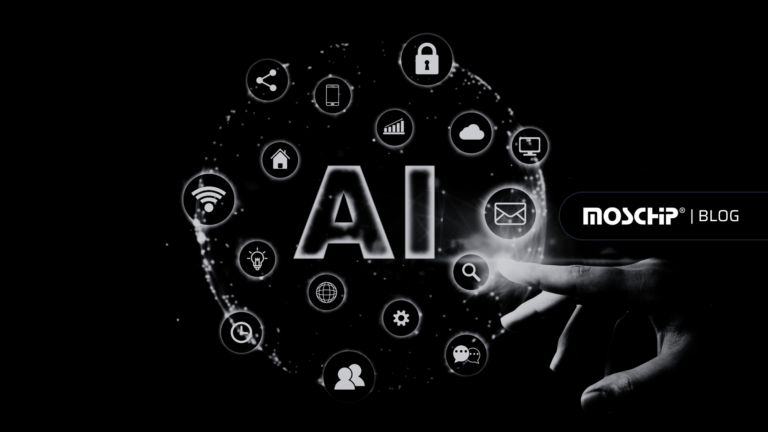Leveraging Robotic Process Automation to drive Digital Transformation
In the current landscape of swift technological evolution, businesses are reconfiguring their strategies to maintain a competitive edge. Central to this transformation is integrating digital transformation as a fundamental approach, with Robotic Process Automation (RPA) emerging as a pivotal catalyst in this process. RPA excels in automating repetitive, rule-based tasks, yielding significant gains in time efficiency while stimulating innovation and enhancing operational productivity.
RPA is a transformative force for embedded systems, essential in various industries and devices. It streamlines complex workflows, enhances accuracy, and facilitates scalability, thereby redefining conventional standard practices like manual testing, development processes, hardware debugging, periodic maintenance, and many more. The increasing adoption of automation by organizations worldwide aims to reduce human error, leading to significant market growth. In 2024, the Robotic Process Automation (RPA) market was projected to reach USD 4.06 billion and is expected to grow to USD 245.26 billion by 2037. This growth represents a Compound Annual Growth Rate (CAGR) of 37.3% during the forecast period from 2025 to 2037.
Role of RPA in digital transformation
RPA utilizes software bots to replicate human actions across digital platforms, optimizing operational efficiency and accuracy through the automation of routine tasks. Its significance is underscored by its ability to enhance the interoperability of hardware and software components, facilitate testing procedures, and refine maintenance workflows. In practice, RPA can automate a range of tasks, including testing of embedded software, executing diagnostics, and overseeing system configurations. This automation noticeably diminishes manual intervention and mitigates the risk of human error. By conducting repetitive tests and diagnostics autonomously, RPA accelerates the testing cycle, verifying system functionality more efficiently. Furthermore, RPA proficiently manages system updates and firmware deployments, which minimizes system downtime and ensures that updates are applied promptly.
The automation of these repetitive and labor-intensive processes not only speeds up the development lifecycle but also enhances the consistency and reliability of modern systems. This leads to streamlined workflows, reduced time-to-market for new products, and improved long-term performance reliability.
RPA’s impact on digital transformation
RPA is a catalyst for digital transformation, particularly in industries burdened with manual workflows such as data validation, debugging, and performance monitoring. By automating these tasks, RPA enables real-time data collection, offering more accurate insights and predictive analytics. This synergy between RPA and digital transformation enables enterprises to scale operations effectively, enhancing agility and competitiveness in a dynamic technological landscape.
Additionally, with the growing use of edge computing and IoT-enabled devices, RPA helps these systems operate autonomously. Tasks such as data synchronization, system updates, and resource allocation are handled without human intervention, making systems more efficient and scalable.

RPA and it’s Key Benefits
Key benefits of RPA in digital transformation
- Higher accuracy, productivity, and improved experiences: RPA ensures precision in repetitive tasks such as sensor calibration, embedded system testing, and report generation. Bots can operate continuously, achieving scalability without the risk of human fatigue or error. In embedded systems, RPA enhances user experience by enabling faster firmware updates, seamless device integration, and efficient troubleshooting, leading to smoother operation of IoT devices and connected products.
- Eliminating human error and providing consistency: Automating complex workflows like hardware validation and embedded software debugging reduces human-induced errors, thereby improving the reliability and robustness of the system. RPA ensures consistent execution of tasks across all stages of embedded systems development, from prototype testing to final deployment, maintaining uniformity in performance and output.
- Enhanced data management and versatility with RPA: It significantly improves data handling in embedded systems by automating the collection, analysis, and reconciliation of data across multiple platforms. This facilitates predictive analytics, offering actionable insights for predictive maintenance and fault diagnostics. By efficiently aggregating data from various embedded devices, RPA provides a unified view of system performance and health. Its adaptability across diverse use cases—ranging from home automation to industrial machinery—makes it a versatile tool that optimizes operations in various embedded applications.
Use cases across industries
- Finance: In the finance sector, RPA is streamlining the operations of ATMs and payment kiosks. By automating routine maintenance tasks such as diagnostics and software updates, RPA ensures that these devices remain operational continuously without the need for manual intervention. For instance, RPA can automatically identify issues like hardware malfunctions, triggering real-time alerts that enable faster resolution and minimize downtime.
- Healthcare: In healthcare, applications such as patient monitoring equipment and wearable devices greatly benefit from RPA. It automates the logging of patient data, error detection, and reporting, thereby reducing human error and ensuring data accuracy. For example, a wearable device that tracks a patient’s heart rate and other vital signs can automatically sync the collected data to electronic health records in real-time, facilitating accurate patient monitoring and timely interventions.
- Telecommunication: In the telecommunications field, RPA automates fault detection, allowing network operators to quickly identify a connectivity problem. Suppose a network device experiences a drop in performance or encounters a configuration issue. In that case, RPA can automatically initiate troubleshooting protocols, adjust configurations, or notify technicians, thereby enhancing the operational efficiency of embedded network devices such as routers and switches.
The Future of RPA in Digital Transformation
The integration of RPA with Artificial Intelligence and Machine Learning will enhance its capabilities, enabling intelligent automation in embedded systems. Future trends involve empowering embedded devices to autonomously make decisions and develop self-healing capabilities in IoT ecosystems. As industries actively transition to Industry 4.0, the demand for RPA in embedded systems is expected to grow significantly, transforming areas such as autonomous vehicles, smart cities, and industrial automation. Additionally, the convergence of RPA with advanced technologies like digital twins and blockchain will further strengthen its role in digital transformation.
In conclusion, RPA is more than just a tool for automating tasks, it is a strategic enabler of digital transformation. By enhancing operational efficiency and opening new opportunities within embedded systems, RPA is changing the way businesses operate. When organizations adopt RPA, they not only achieve their digital transformation objectives but also protect their operations by ensuring data consistency and improving overall operational security by automating processes that could be prone to manual mistakes. As RPA continues to advance, its importance in embedded systems will become crucial, making it an essential element of the digital age.
MosChip® is continuously contributing to digital transformation, assisting businesses in maximizing automation. Our MosChip® DigitalSky™ enables businesses to streamline repetitive tasks, reduce human error, and increase operational efficiency. By automating workflows and processes, organizations can free up valuable human resources to focus on higher-value tasks, accelerate service delivery, and improve accuracy.
With our expertise in Quality Engineering, we ensure thorough testing, continuous validation, and seamless system integration, enhancing the reliability and performance of the solution. Our persona-centric intelligence approach improves automation, QAOps, and DevOps, leading to smarter operations and accelerated growth. This enables businesses to evolve into connected and intelligent enterprises, capable of seamlessly integrating advanced technologies to drive operational efficiency and foster innovation in an increasingly digital world.
Author
-
Ambuj is a Marketing professional at MosChip creating impactful techno-commercial writeups and conducting extensive market research to promote businesses on various platforms. He has been a passionate marketer for more than three years and is constantly looking for new endeavours to take on. When He’s not working, Ambuj can be found riding his bike or exploring new destinations.








